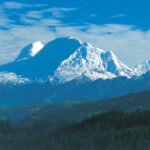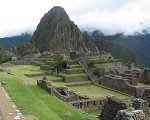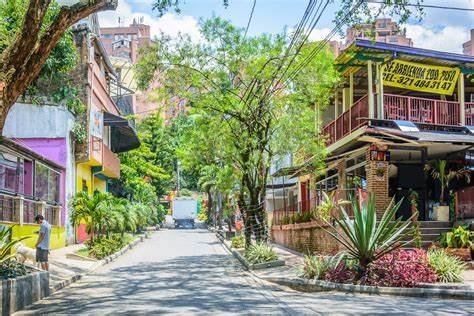Main Info
2 Day Tour
The Incas built artworks such as paths, bridges for the continuity of the walk being. Surrounding
of the most impressive places in the Sacred Valley, under the frozen Andes mountain range, near the Vilcanota River (Willkamayu), also paradisiacal site of esplanades, cliffs, precipices and exceptional natural landscapes.
When should I go to do CAMINO INCA? What is the best season to do CAMINO INCA?
Is from may to november wich are the months without rains and besides this time is considered high season.
The Inca Engineers built an extensive network of roads, with an approximate length of 23,000 km that communicated with Cusco (Qosqo) with the four regions of Tawantinsuyo. Therefore, they knew how to overcome the rugged topography, using paths that shortened the distances, crossing the valleys and the natural passage of the high peaks or passes, they built works of art such as bridges of different designs, for the continuity of the paths, being a sample objective and emblematic.
And the center of all this network of roads, of all this empire was Cusco the city of the incas with an unmistakable cultural identity that created a wonder such as Machu Picchu.
The Andean Road System Qhapac Ñan
Machu Picchu, Inca Architecture and Engineering
It is one of the most impressive places in the Incas Sacred Valley, under the Andes mountain range, with the winding of the Vilcanota River (Willkamayu), the citadel of MachuPicchu emerges, as the most relevant synthesis of the Millennial Andean; Cultures paradisiacal site of esplanades, cliffs, precipices, wild and deep with an exceptional natural landscape.
The Inca constructions, with great talent and mastery, built a city that constitutes a harmonious architectural complex of incomparable beauty, for their Apus, tutelary gods of the cosmos (Hanajpacha), to mother earth (Pachamama) and to natural forces. This lithic structure is a product of Inca architecture and engineering, confused in the tangled jungle, among an environment of exuberant beauty of flora and fauna.
Indisputable cultural and historical reasons have been influential in the global consensus for the recognition of Machu Picchu as a “CULTURAL AND NATURAL WONDER OF HUMANITY”, a distinction granted on July 7, 2007, almost 100 years after its scientific discovery, by Hiram Binghan (July 24, 1911).
The building is attributed to Pachacuti Inka Yupanki, in the period from 1,438 to 1471. It was built on a large granite massif, known as ´´El Batholito de Vilkabamba´´, where the stones were extracted to sculpt the lithic pieces.
Regarding the architecture, the perfection of the territorial planning is astonishing, which has been adapted to the place, whose topographic relief is irregular and rugged. The orthogonal layout of its streets and enclosures maintains an almost perfect symmetry, associated with the marked unevenness, defined by platforms, retaining walls and stands, as well as the pyramidal projection of the roofs and other construction elements, which differentiated the urban area from the agricultural.
In the field of engineering, the technology of ancestral, pristine, unique and unsurpassed construction quality is awesome, identified with an unmistakable seal, which can be seen in the opening of doors, windows and trapezoidal niches, elevation of the walls of the rigged and slant style enclosures. The projection of the arcs above the door frames define the attractive pyramidal roofs with two and four drops or slopes.
INKA ENGINEERING
To define the location of the place where the city of Machu Picchu should be built, engineers evaluated the feasibility of supplying the basic elements. That is, water, materials such as granite in sufficient quantities for buildings, the biodiversity of the area; with the vision of achieving a symbiosis between future inhabitants, nature and the stone city, in addition to the appropriate topography to obtain efficient connection routes.
Likewise, the optimal environmental conditions for the quality of life of future occupants. As soon as they verified that these factors satisfied the required conditions, they chose the site with unique precision, where the eternal city is currently located.
The colossal Inca city endures unscathed over time, which was achieved through the government of Inca Pachacuteq (1438), who is attributed with the planning of the sacred city and the most important buildings built to worship their gods and deities which transcend to the present day, as the most relevant expressions of the synthesis of the Millennial Andean Cultures.
Inca Engineering, based on the evidence that can be seen, shows that it was specialized, diversified and has affinity in the current context with geological, construction, hydraulic, road, agricultural and environmental engineering, to name a few with greater intervention. So it is indisputable to affirm that the engineers of 500 years ago were specialists and efficient, like the engineers of the current era, having as a common denominator various current knowledge in both technologies. The expansion the Tawantinsuyo area was so large that it almost doubled the current extension, not being an impediment to the presence of Inca technology, in all confines of the vast territory, currently in several countries such as Ecuador, Bolivia and Argentina.
In the last 70 years, various entities, including the National Institute of Culture, have assumed the task of preserving and conserving the citadel.
Regarding the mitigation of environmental impacts, there is evidence that the monument is affected by the action of anthropic and environmental elements.
such as external geodynamic phenomena, weathering, mechanical and biological weathering, due to the greenhouse effect and climate change.
For all these kinf of things an more we could say «Machu Picchuhttps://www.perudestino.com/tour/safe-tour/https://www.perudestino.com/destination/cusco/https://www.perudestino.com/destination/cusco/ Inca engineering that transcends«







